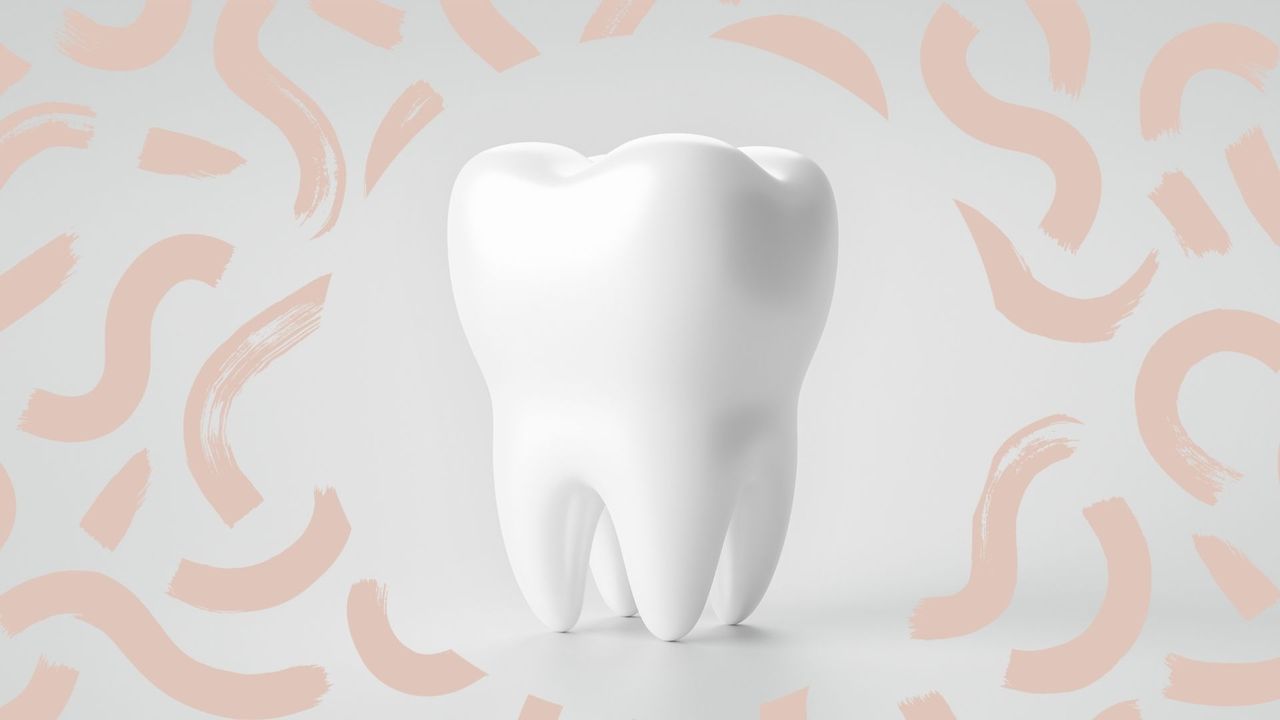How to remove tartar buildup at home for a healthier smile
Tartar forms as a result of plaque build-up—these are the preventative measures you can take to get rid of plaque at home


How to remove tartar from teeth without a dentist is a common question that most oral health professionals are asked. Sadly, the reality is that this is not a procedure that can be carried out safely at home. However, there are home remedies for dealing with excessive plaque build-up, which causes tartar, so a modification to your dental routine could prevent the issue from developing.
A good place to start is by getting hold of one of the best electric toothbrushes. Once you've done that, you can fine-tune your dental routine as well to tackle plaque before it becomes a problem. But first, what exactly is plaque, and how does it relate to tartar?
What are plaque and tartar, and how are they related?
“Plaque is a bacteria-containing film that coats the teeth,” explains Dr Mahnaz Rashti, periodontist and cosmetic surgeon. “Tartar, also known as dental calculus, is the deposit that forms on teeth when plaque hardens.”
But what causes plaque in the first place? “Food, beverages, and saliva combine together in the mouth and create an environment for bacteria to thrive and grow in,” says Dr Rashti. “The bacteria grow on the teeth and gums, causing plaque build-up.”
What’s tricky about monitoring plaque is that it can be difficult to notice, because plaque is almost colorless. However, Dr Rashti explains, “If left on the teeth for too long without cleaning and brushing, plaque will form into tartar, which is yellow- or brown-colored.”
Once tartar forms, the problem becomes more difficult to combat. While plaque can be removed from the teeth at home, eliminating tartar is a different story. “To get an idea of how strongly tartar bonds to the teeth, consider this: one way that researchers determine what foods humans ate thousands of years ago is by examining food particles found in tartar build-up on the teeth of ancient skeletons,” says Dr. Jin Lin, owner of Hurst Pediatric Dentistry. That’s right—even centuries of decomposition doesn’t get rid of tartar. To avoid this pesky issue altogether, make sure you keep up with routine oral hygiene.
What are the risks of tartar build-up?
A visible reason that tartar is a pain is that it changes the appearance of your smile. Your teeth will have yellow or brown spots, making them look stained and unhealthy.
Sign up for the woman&home newsletter
Sign up to our free daily email for the latest royal and entertainment news, interesting opinion, expert advice on styling and beauty trends, and no-nonsense guides to the health and wellness questions you want answered.
And serious dental problems can also arise from tartar. “When plaque and tartar build-up, it can lead to inflammation of gums and the soft tissues of the mouth, more commonly known as gingivitis,” explains Dr. Ruth Baidoo, private dentist and brand ambassador for Waken Mouthcare. “This can sometimes cause bleeding, or receding gums and tenderness. If gingivitis is left untreated, it could lead to further advancement of gum disease, also known as periodontal disease.”
If you start to notice tartar on your teeth, it’s important to act fast before it creates more problems. So, what are your options for dealing with tartar?
Can tartar be removed at home?
“I strongly recommend against trying to remove tartar at home,” says Dr Lin. “If you have tartar build-up, see a dentist. Dentists use sharp tools known as scalers to scrape tartar off the teeth.
Scalers are widely available for purchase, however, experts don’t recommend using one at home if you aren’t a trained professional. “Improper use of a scaler can lead to gum injury, infection, and accidentally pushing tartar underneath the gums,” Dr Lin warns. By attempting to remove tartar without a dentist, you can do far more harm than good to your oral health."
5 ways to get rid of plaque at home
Luckily, good oral hygiene can combat plaque build-up early on, before it turns into tartar. There are even some home remedies that can treat plaque more aggressively.
1. Maintain good oral care habits
“You can remove plaque at home by brushing your teeth well twice a day and flossing once a day,” recommends Dr Lin. Check out how to brush your teeth properly—a good brushing technique involves brushing gently for at least two minutes and making sure to get every side of each tooth. Equally, there is a right and a wrong way to floss—make sure you know how to floss for best results. Oil pulling is also a good way to maintain good oral health.
2. Visit your dentist regularly
Dr Baidoo recommends “visiting your dentist regularly so they can assess any changes.” Your dental hygienist will remove plaque build-up, preventing tartar from forming, and your dentist will be able to spot tartar in places you might not have noticed. Going to the dentist once every six months is a great way to stop plaque and tartar in their tracks before they become a problem. You can also chat to your dentist about teeth straightening treatments that will make it easier to clean in between teeth (check out our guide to invisalign vs braces for more information).
3. Use oral care products with fluoride
The recommended amount of fluoride in an adult’s toothpaste is 1450 parts per million (ppm), according to Dr Baidoo. Using toothpaste with this amount of fluoride will help to fight plaque build-up.
4. Use a baking soda mixture
Good oral hygiene and regular dental visits should effectively prevent excessive plaque that leads to tartar formation. However, if you’re still struggling to fight bacteria and build-up, you might want to try natural home remedies every once in a while. “One effective treatment is mixing salt and baking soda and using the paste to brush your teeth,” explains Dr Rashti. “Both the salt and the baking soda help soften the build-up, which makes it easier to remove.” This is also an effective teeth whitening treatment to try at home.
That being said, it’s important to use this home remedy in moderation. “Despite its benefits, it also has its drawbacks. Salt and baking soda are both abrasive. Long-term use of them will lead to damage to both your gums and teeth,” Dr Rashti warns.
5. Gargle white vinegar
“Another method would be to gargle with white vinegar,” says Dr Rashti. “The acidity will kill the bacteria and also remove the build-up on the teeth and gums.”
As with the baking soda method, this home remedy should be used sparingly. “Long-term use of white vinegar may dissolve enamel and damage the tooth's surface. Subsequently, the teeth will become very sensitive,” explains Dr Rashti.
These two home remedies should not become a part of your daily routine. They should only be used if you notice excessive plaque build-up, and even then, you should only perform these tasks once or twice to tackle the issue. If the plaque continues to persist, it’s high time to give your dentist a call.
woman&home thanks Dr Mahnaz Rashti, Dr Jin Lin of Hurst Pediatric Dentistry, and Dr Ruth Baidoo of Waken Mouthcare for their time and expertise.
Ciara McGinley is a meditation practitioner and health journalist. She qualified as a meditation teacher with the British School of Meditation in 2020 and is the founder of Finding Quiet, a series of classes, workshops and retreats that combine meditation practices and mindfulness techniques to make mindful living realistic in an always-switched-on modern world. She is all about bettering that mind-body connection but believes wellness looks different to everyone.
Ciara is also the former Health Channel Editor at woman&home and has covered all things health and wellbeing for years, from fitness to sleep to relationships.
